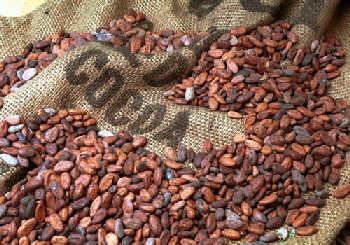Brazilian coffee bean boutique coffee common sense

Brazilian coffee beans
Brazilian coffee beans refer to all coffee beans grown in Brazil. In addition to Sanduo Division, Brazilian beans are mostly "cheap" coffee. Mixed coffee beans that can be used for mass production, mostly for heavy roasting. The main ingredient of instant coffee is Brazilian coffee beans.
When the coffee bean germ is very fresh, it is artificially refined and allowed to dry naturally in the shade room for about 60-70 days, so that the sweetness of the pulp fully penetrates into the bean.
Characteristics of Brazilian Coffee Beans
Coffee beans large aroma strong, moderate bitterness, also has a high texture of sour, overall taste soft, low acidity, careful taste endless aftertaste.
Brazilian coffee taste with a low acidity, with the sweet and bitter taste of coffee, the entrance is extremely smooth, but also with a touch of grass aroma, in the fragrance slightly bitter, sweet smooth mouth, aftertaste can make people comfortable and carefree.
Brazil is located in the Latin American region of the Western Hemisphere, located in the eastern part of South America, on the west coast of the Atlantic Ocean, bordering all countries on the South American continent except Ecuador and Chile; most of its territory is located between the equator and the Tropic of Capricorn, making it the most extensive tropical country in the world. 1/3 of the territory belongs to tropical rain forest climate, 2/3 belongs to tropical grassland climate, superior tropical natural conditions are very suitable for the growth and production of tropical cash crop coffee. Coffee belongs to Rubiaceae, likes heat, about 40 kinds, and cocoa, tea and called "the world's three major drinks."
Brazil makes full use of the tropical geographical environment, attaches importance to coffee production and sales, so that coffee production, export volume, per capita consumption for many years has been ranked first in the world, known as the "coffee kingdom." But coffee's home is not Brazil, but Ethiopia's Kafa province in Africa.
Coffee was introduced into Brazil after the 18th century. In 1727, coffee was introduced into Belém Port of Brazil from Guyana. Since then, it has settled in Brazil, mainly distributed in the southeast coastal areas of Brazil, namely Sao Paulo, Barana, Santo Espírito and Minas Gerais. From the late 18th century to the 1920s, Brazil's coffee production was at its peak, accounting for 75% of the world's total coffee production. Over the longer term, coffee exports accounted for two thirds of Brazil's total export earnings, making Brazil a well-deserved "coffee kingdom." The economic crisis that broke out in 1929 caused a sharp drop in world coffee consumption and dealt a heavy blow to Brazil's coffee economy.
Since then, the share of Brazilian coffee production in export earnings has plummeted. In the past 30 years, with the rise and development of Brazil's modern industry, especially steel, shipbuilding, automobile, aircraft manufacturing and other industries, coffee's position in the national economy has declined year by year, but it is still one of Brazil's economic pillars, and Brazil is still the world's largest coffee producer and exporter.
Important Notice :
前街咖啡 FrontStreet Coffee has moved to new addredd:
FrontStreet Coffee Address: 315,Donghua East Road,GuangZhou
Tel:020 38364473
- Prev

The most expensive coffee in the world comes from cat shit, musk cat coffee.
Some people will buy their own coffee machine coffee beans to make coffee to drink. But do you know what is the most expensive coffee bean in the world? The most expensive coffee beans in the world actually come from civet droppings. Civets live in the jungle, live in trees, and come out at night. They eat the coffee fruit, but cannot digest the coffee beans in the fruit. In passing through the civets' digestive and excretory system
- Next

What etiquette and etiquette should be paid attention to when drinking coffee
How to take a coffee cup and drink coffee after a meal is usually served in a pocket cup. The ear of this kind of cup is so small that you can't get your fingers out. But even if you use a larger cup, don't put your finger through the ear and carry the cup. The correct way to hold a coffee cup is to hold the handle of the cup by your thumb and forefinger and then pick up the cup. How to add sugar to coffee when adding sugar to coffee, sugar can be used.
Related
- Beginners will see the "Coffee pull flower" guide!
- What is the difference between ice blog purified milk and ordinary milk coffee?
- Why is the Philippines the largest producer of crops in Liberia?
- For coffee extraction, should the fine powder be retained?
- How does extracted espresso fill pressed powder? How much strength does it take to press the powder?
- How to make jasmine cold extract coffee? Is the jasmine + latte good?
- Will this little toy really make the coffee taste better? How does Lily Drip affect coffee extraction?
- Will the action of slapping the filter cup also affect coffee extraction?
- What's the difference between powder-to-water ratio and powder-to-liquid ratio?
- What is the Ethiopian local species? What does it have to do with Heirloom native species?

